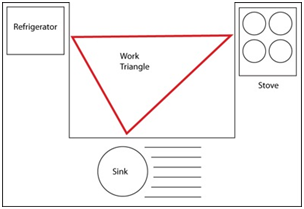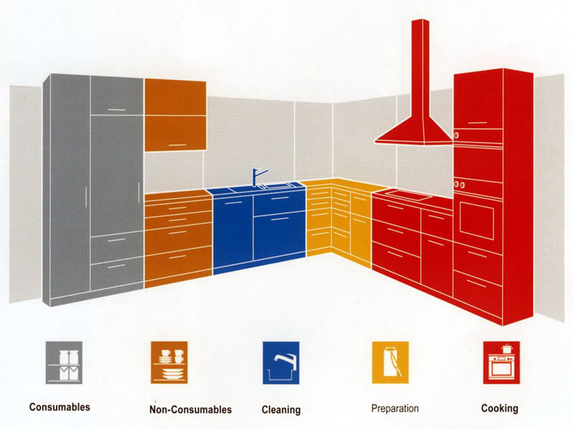
Applying some basic principles will help you navigate your way through the process of designing your dream kitchen although the advice of an experienced kitchen designer such as the team at absolute kitchens should always be sought!
At Absolute Kitchens we work with our customers to apply the ‘kitchen triangle’ principle wherever we can although helpful there are new trends which mean that we need to be creative and innovative in using this proven approach.
Designing a new kitchen isn’t easy. There are many things that need to be thought about, design decisions to be made and not to mention choosing from the plethora of styles, colours, finishes, appliances and even handles that are on the market.
Developed in the early twentieth century, the working triangle—also known as “the kitchen triangle,” is a theory that states a kitchen’s three main work areas should form, you guessed it, a triangle

However, quite a bit has changed since the ‘kitchen triangle’ was first developed. preparing food is no longer largely the responsibility of one individual within a home , families and couples like to cook together and kitchens are frequently open to the rest of the home as opposed to a closed-off space where only behind-the-scenes tasks happen.
In a kitchen where cooking, dining, living and entertaining will all happen, clever design can prevent the work area from becoming cluttered. Keep functional things, such as sinks, dishwashers and laundry out of view, but position the hob and preparation areas so the cook can be engaged in socialising as well.

For example, your baking zone should have everything you would possibly need to bake—measuring cups and spoons, rolling pin, baking sheets—and ideally be located near both your pantry and your oven whilst your preparing “zone” has everything you need to prepare: knives, colander, peeler, recycling or disposal, etc.
No longer just spaces to prepare food, kitchens have replaced formal dining rooms as the place to catch up with friends and family. however, turning a kitchen into a multi-use area requires different considerations than for one that’s in a separate room. you’ll need to design a layout that makes the best use of space and choose the elements with care.

It will always be important to evaluate traffic flow between each zone, and if it makes sense with your needs, the classic triangle is still a great way to go. but if you find it’s not resonating in your particular layout, the realities of the space that you have and how you want to use your kitchen space, fear not.
Just like all rules, triangles are made to be broken.
